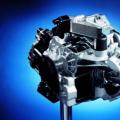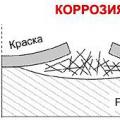1986 Barkas B1000 - longboat
Barkas (VEB Barkas-Werke) is an automaker in the GDR, which from 1961 to 1991 produced minibuses and delivery vans of the B1000 model, as well as light trucks and special vehicles based on them.

The production was created on the basis of the Framo car plant in Karl-Marx-Stadt (now Chemnitz), which was nationalized by the government of the GDR.

The assembly production of the enterprise was distinguished by low automation and a high proportion of manual labor. At the same time, the only produced model had not undergone major modernization for several decades, and by the beginning of the 1990s. is very outdated. After the unification of Germany, Barkas products turned out to be uncompetitive, and on April 10, 1991, the car factory's conveyor was stopped.

In 1993, the equipment of the enterprise was dismantled and packed for shipment to Russia in order to organize the production of minibuses at the Kirov plant near St. Petersburg, however, due to the lack of freely convertible currency from the Russian side, the transaction did not take place, and all the cargo prepared for shipment was scrapped.

Today, the site of the former Chemnitz plant is home to an assembly plant for Volkswagen engines.

Barkas B1000
Total information
Engines
| Weight: | 1324 kg |

In the early 1950s. the leadership of East Germany was tasked with creating a multi-purpose truck with a carrying capacity of 1 ton, capable of moving at a speed of 100 km / h. In 1956, a prototype of a van called L1 was built, a year later, a prototype of a minibus, which over several years passed more than 1 million km of tests. The design features of the promising model were: a wagon layout, a supporting all-metal body, an independent torsion suspension, and front-wheel drive.

The first production batch of cars was produced on June 14, 1961. Originally installed two-stroke, three-cylinder, air-cooled engine from Wartburg-311 with 28 hp. was boosted to 42 hp, in 1972 - up to 45 hp, while an additional cooling system was introduced into the design.

On May 15, 1969, the Barkas B1000 was assembled with the Moskvich-412 power unit. However, the Soviet side refused to supply this engine, since it accounted for more profitable export supplies. Also, attempts to install a diesel engine and bring the carrying capacity to 1.3 tons failed.

In the next two decades, the design of the car underwent changes in the steering, clutch mechanism and lighting technology, in 1987 a sliding side door was installed in the van.

In 1989, the four-stroke diesel engines Volkswagen went into the series, the model received the index B1000-1.

A total of 175,740 Barkas B1000 cars and 1961 B1000 / 1s minibuses were produced.

50 years ago, on June 14, 1961 in the city of Karl-Marx-Stadt, a pilot series of the Barkas B1000 delivery vehicle rolled off the assembly line.
Actually, both in German and in Russian the name of the car means the same thing - launch. In Dahl's dictionary "barkas", it is "the largest rowing ship, a laborer, for the delivery of an anchor and transportation of people and weights ..." The word is of French origin, barcasse. It is understandable why the designers of the VEB Zentrale Entwicklung und Konstruktion für den Kraftfahrzeugbau (VEB ZEK) design bureau, located in the city of Karl-Marx-Stadt, decided to name the new car. According to the order issued by the party, it was supposed to create a multi-purpose truck with a carrying capacity of 1 ton, capable of a speed of 100 km / h. Such machines in Germany were called Schnell-Laster, that is, a high-speed truck. Work on its design began in 1950, but in the young democratic Germany in those years everything changed so quickly that five years later VEB ZEK completely revised the concept of the machine. In particular, the strict limits on the metal obtained from the USSR forced a more careful approach to the mass-dimensional parameters of the machine. In addition to the fact that it was supposed to be a front-wheel drive truck, now they decided to equip it with a monocoque body.
The wagon layout, bearing an all-metal body, independent torsion bar suspension, front-wheel drive - the prototype of the van, conventionally called the L1, was ready in 1956. The next year, prototypes of a cargo-passenger model and a minibus were added to it.
The car was to be produced by the national enterprise VEB Kraftfahrzeugwerk FRAMO Hainichen in the city of Hainichen. It was the former Framo factory, founded by Jorge Skafte Rasmussen (he also created the famous production of motorcycles and cars DKW) For German soldiers during the Second World War, the standard Framo nurse was a symbol of getting rid of frontline horror. Naturally, the authorities of the GDR did not want such associations, and therefore in 1957 the plant was renamed. And in 1958, on the basis of a cluster of enterprises, the VEB Barkas-Werke Karl-Marx-Stadt combine was created. It includes the former Framo plant in Hainichen, and the engine and assembly plant in Karl-Marx-Stadt itself, as well as the fuel equipment plant in Wolfpfütz.
In 1958, the car, still bearing the L1 designation, takes on its final shape and is sent for certification tests. In the period from 1956 to 1961, prototypes have time to run over a million kilometers.
The first car to come off the assembly line had chassis number 40009. In total, the zero series consisted of 39 vehicles, including an ambulance, two cargo-passenger and two 11-seater minibuses.
The Germans demonstrated that despite the dismantling of equipment in 1945, the flight of many specialists to the West, despite all the limits and prohibitions imposed by the USSR, they are able to create decent cars. Let the Barkas B1000 be equipped with an outdated power unit that worked at the limit of its capabilities - in terms of such parameters as capacity, specific carrying capacity, design, ergonomics, its comparison with the Soviet RAF Latvia or UAZ-451 was not in favor of the latter. Barkas significantly stood out against the background of European counterparts. In 1962, visitors to the Leipzig Fair could be convinced of this, where the official international debut of the novelty took place. Alas, the socialist system prepared for such projects a long life and, whatever the advantages, they gradually dried up.
Repeated attempts to improve the design were limited only to changes, without which the car could not be sold in foreign markets. The car acquired dual-circuit diagonal brakes, oversized lighting equipment. The 900-cc three-cylinder two-stroke engine AWE-311 from the passenger car Wartburg-311 was bored out to 991 cubes (AWE-312) in 1962, and instead of the pitiful 28 it began to produce no less humiliating 42 hp. In 1969, an additional cooling system had to be introduced into the design so that the engine did not overheat. In 1972, the strength increased as much as three. The question of replacing the engine with a four-stroke, which was repeatedly raised, was constantly postponed. On May 15, 1969, a prototype Barkas B1100 with a Moskvich-412 engine was built at the plant, counting on cooperation within the Council for Mutual Economic Assistance (CMEA). However, the USSR did not single out motors - at that time "412" was a hot export product.
I had to be content with what was available. Barkas, however, was in demand outside the GDR. On February 22, 1980, the 100,000th B-1000 rolled off the assembly line.
Attempts at the end of the 1960s to install a diesel engine, disc brakes on Barkas, and create a modification with a carrying capacity of up to 1.3 tons failed. What did change in the car? On August 9, 1977, the hydraulic clutch was discontinued. On October 31, 1979, the worm steering gear was replaced with a more modern rolling ball screw nut. In 1985, a diaphragm clutch was installed on Barkas. The maximum change that befell the car was the sliding side door in June 1987.
In 1989, when the unification of the two Germany dawned, they finally began to install a four-stroke engine on Barkas, under license from Volkswagen - the car received the designation B1000-1. This innovation played, rather, a psychological role: the "Aussies", as the inhabitants of the FRG called the East Germans, did not look so backward in their eyes. Nevertheless, the fate of Barkas and the Heinehen plant was sealed. The assembly was carried out by primitive methods, "on the knee", the car did not have disc brakes. On April 10, 1991, the last Barkas rolled off the assembly line. He was seen off with genuine sadness - over the years, several generations of Germans managed to catch the fancy of the pretty car. In total, the company produced 175,740 Barkas B1000 vehicles. The plant's equipment was dismantled, its traces were lost either in St. Petersburg or in Kazan.
Modifications Barkas B1000
Barkas B1000 1.0 MT
Classmates Barkas B1000 by price
Unfortunately, this model has no classmates ...
Owner reviews Barkas B1000
Barkas B1000, 1984
A unique car of the socialist era. A specially designed machine for raising the national economy of the GDR. Front-wheel drive, 3-cylinder, 2-stroke 45 hp engine. Torsion bar suspension, a gearbox with an overrunning clutch, such as a semiautomatic device, you drop the gas - the car rolls in neutral, you press the gas - Barkas B1000 smoothly picks up. Loading capacity 900 kg. Electronic economizer, LED fuel level and temperature, coil for each candle. For those times, advanced technology. At a time when our Zhiguli cost 15 thousand marks in the GDR and there were queues for it, Barkas B1000 cost 150 thousand marks and could be sold into private hands only with the personal permission of Eric Honecker. The car was intended only for use in organizations and was produced on more than 13 different chassis. Now this exhibit is carefully used for outdoor walks and parties in nature. I sold the car, Barkas B1000 went to Tyumen, but a warm attitude towards this brand remained, in our city there are still a lot of such riders and maybe I will still have Barkas in the ranks of my rarities.
Dignity : it is simply a unique car.
disadvantages : you can close your eyes to them.
Alexey, Kostroma
Barkas B1000, 1986
I got Barkas B1000 from my grandfather. It was already in very good condition, but, of course, I had to dig deeper into it: repairing the pump, regulating the ignition, bringing the engine into working order. This car was produced in 1986, production of the GDR. Engine displacement 0.992 l 46 Hp, 2-stroke 3-cylinder engine, gasoline is mixed with oil 1/50. Front-wheel drive, there is a blocking of the driving wheels, a 4-speed mechanical box, which allows you to roll forward without switching off the gear. Independent torsion bar suspension, Barkas B1000 has 7 passenger seats, there is a sunroof for ventilation and the car is equipped with an independent interior heater that runs on gasoline (there is a separate 5-liter tank - it heats up so that you will not freeze in winter). The rear window is heated electrically. All parts of this car except tires and battery are original. Even a first-aid kit, a fire extinguisher and a factory jack. On the road, the Barkas B1000 behaves quite steadily, due to its mass and torsion bar suspension, shallow pits and a gravel road are not perceptible for it. It picks up speed slowly, but after 60 km / h it is quite torquey, the optimal speed is 80. The car is in decent condition. At the moment, Barkas is an irreplaceable assistant in the household and outdoor activities. Our plans are to keep the Barkas B1000 in its original form.
Dignity : a great car of its era.
disadvantages : needs attention. Age.
Dmitry, Smolensk
Barkas B1000, 1970
So, we have a 1970 Barkas B1000 with a dead engine and a good body. A comfortable minibus with a reliable power unit, good brakes, and quite roomy. I will restore, as the condition of this unit leaves much to be desired. The choice was made in favor of a 1.8 liter engine and a VW Passat B2 gearbox. This unit, which is very common in our area, is distinguished by its unsurpassed reliability, simplicity, low price and availability of spare parts. And it's a pleasure to work with him - he understands and assembles like a Kalashnikov assault rifle. And in terms of dimensions and weight, it is not much larger than the native 2-ton, and even more so 4-ton.
Dignity : a car for connoisseurs.
disadvantages : needs attention.
The history of the creation of Barkas B1000
"Rafik" from the GDR, or the story of the creation of Barkas B1000
What do we know about automotive Germany during socialism? Most motorists will remember the world-famous Trabant and Wartburg, which really were the symbol of the GDR. But it would be wrong to forget one more car. Or rather, the Barkas minibus, which for many years has become a kind of German "Rafik".

If you look very deeply, it turns out that Barkas owes its appearance to the Dane Jorgen Skafta Rasmunsen, who, having received an engineering education, settled in Germany at the end of the 19th century. Having opened a small company in Chemnitz, specializing in the production of valves, Rasmunsen soon achieved his first successes, after which the production was transferred to the city of Chopau. Gradually, other metal products replaced the ingenuous fittings, and after the First World War, ferry cars began to be produced at the Chopau plant.
Over time, the latter acquired their own name DKW, and at the end of the 20s, Rasmunsen's company mastered the production of mopeds, motorcycles and gasoline engines for them. By this time, the talented Dane had become so authoritative in the automotive industry that he created another production facility without much difficulty, together with other industrialists. The new factory specializing in the production of components for DKW equipment, after several renames, became known as Framo.

By the 1930s, DKW had become one of the largest German manufacturers of light commercial vehicles. First, at the Framo plant, small three-wheeled vans were produced on the basis of DKW motorcycles, and after a couple of years, the production of four-wheeled vehicles was mastered. All in all, in Frankenberg, where the Framo factory was located, about 5 thousand units of a wide variety of equipment were produced annually. Surely, production would have developed rapidly further, but the Second World War made its own adjustments.
Like most other German enterprises, the Framo plant was redesigned for the needs of the military industry, and after the defeat of Germany, most of the equipment was transferred to the Soviet Union. From the Framo, once known throughout Western Europe, a small auto repair shop remains. The story could have ended on this, but the enterprise was saved by nationalization. In 1949, it was incorporated into the largest industrial association Industrieverband Fahrzeugbau, after which the plant received a new name - Werk Framo Hainichen.
Having received the approval from the countries of the Council for Mutual Economic Assistance, which included East Germany, WFH began production of several models at once: the pre-war Framo V501 truck and the more modern Framo V901. Once again, the plant changed its name only in 1958. This time on behalf of Framo it was decided to abandon it altogether, and instead the "people's enterprise" was named Barkas Verke Hainichen. The Saxon city of Chemnitz, from which it all began, has gone down in history. The newly-minted Karl-Marx-Stadt became the birthplace of the newly minted "Barkas".

Like the Soviet Union, young East Germany was in dire need of a large number of delivery vans and small trucks. It is not surprising that the country's leadership very soon asked the designers from Karl-Marx-Stadt to devote all their efforts to developing a new generation car. Considering the huge pre-war engineering potential and the accumulated experience of German specialists, the result was not long in coming. It was assumed that the new generation van will have a wagon layout, front-wheel drive, monocoque body and independent torsion bar suspension. At that time - the design is very innovative. Only with the name of the future car they decided not to bother. The van received the same name as the company - Barkas.
Specifications Barkas B1000
In an effort to reduce costs, even at the design stage, Barkas was largely unified with the Wartburg-311. For example, he borrowed a three-cylinder engine. With a volume of 966 "cubes" its power was 37 horsepower, which was more or less enough for a light van. In 1956, the first prototypes saw the light, and a year later, minibuses with a different layout and purpose joined the version with an all-metal body. Like the Soviet RAF, the German Barkas was to become an ambulance, a fire department, and just a delivery van.

By 1961, several dozen prototypes had covered over a million test kilometers. After eliminating the identified shortcomings, Barkas was put into mass production. It is noteworthy that the B1000 version (the figure shows the carrying capacity of the van) was manufactured in Karl-Marx-Stadt, after which the car was reassembled in Hainichen. The 37-horsepower engine, which was installed on the prototypes, was abandoned almost immediately after the start of production. Not to say that the new 42 horsepower AWE-312 power unit significantly improved the dynamic capabilities of the car, but in any case it was a step forward.
The modest Barkas is loved not only by ordinary motorists, but also by professionals. The latter did not fail to note that the van weighing 1200 kilograms can take away almost the same amount. And due to the absence of a propeller shaft and an all-metal body, the van could accommodate up to six "cubes" of cargo. By the mid-60s, an eight-seater minibus and a flatbed truck were added to the existing versions. In parallel, engineers have improved the design of the car itself. The drivers, who often had to spend days at the wheel of the Barkas, were not forgotten either. So, for example, an opening hatch was provided for cooling the passenger compartment on the roof. In winter, on the other hand, the heater installed on the passenger versions of Barkas saved the day.
In 1972, Barkas received a new engine from the Wartburg-353. And in the same year, all versions of the car were significantly improved, which allowed them to comply with international requirements regarding emission and safety standards. Barkas got improved steering, seat belts, clutch cable, new power system. And here is the appearance
Barkas was changed only in 1983. Although, given that it initially turned out "timeless" and caused extremely positive emotions, it all came down to the installation of other bumpers and "foglights".
In 1988, another small modernization took place: the side hinged door gave way to a sliding door. By this time, the company in Hainichen had already produced more than 150 Launches.

Trucks, minibuses and vans, which are in demand in poor socialist countries, could well have been produced for another ten years, but history has decided otherwise. After socialist Germany got the opportunity to use technology from the capitalist FRG, the fate of Barkas was sealed. A car produced since 1962, even with a modern "Volkswagen" 1.3-liter engine, could not compete on equal terms with much more advanced commercial equipment from the same Volkswagen. Like Trabant and Wartburg, Barkas was eaten by the "sharks of capitalism".
Surprisingly, Barkas almost got a second life in Russia. The idea was to buy cheap equipment for car manufacturing, and then localize its assembly. The pedantic Germans agreed to the deal and even practically sent the equipment, but at the last moment the Russian side backed down. A year later, it was decided to dispose of the machines and stamps that no one needed. In the glorious history of Barkas, a fat point was put.
Not so long ago I started a series of publications about old minibuses, so I am replenishing the collection with another article. This time I want to talk about a "minivan" from the GDR - a now defunct country of the nonexistent Eastern Bloc - the Eastern part of Germany, which belonged to the countries of the "socialist camp". It's about the Barkas B1000 car. Why did I put the "minivan" in quotation marks? Yes, because such a concept simply did not exist at that time, although this minibus can be safely attributed to this class.
The Barkas B1000 was released in 1961, replacing the previously produced Framo V901 van at the VEB Barkas-Werke plant in Chemnitz. The car was strikingly different from its predecessor. A fairly modern design - a fresh design, a cabin over the engine, front-wheel drive, independent torsion bar suspension on all wheels made it stand out among the army of light commercial vehicles of that time. Even the 0.9l 3-cylinder two-stroke engine. 43 h.p.,
traced back to the motorcycle manufacturers DKW, was not yet an anachronism, although it was already considered outdated. Using structural elements, components and assemblies of the Wartburg 311 passenger car, German engineers have created a light delivery vehicle with numerous modifications - a passenger minibus, a pickup truck, a closed van, etc. The car has acquired a bright and memorable exterior. From the passenger car Wartburg 311, Barkas also inherited the engine - a three-cylinder petrol two-stroke engine with a volume of 0.9 liters, type AWE 311, with a capacity of 43 hp. and a four-speed gearbox. Later, this engine was replaced by an upgraded AWE 312 with a displacement of 0.992 liters and 46 hp. The maximum speed that the car was able to develop was 110 km / h. Despite the modern appearance of this car at that time, many technical solutions were outdated. So, for example, the engine did not have its own lubrication system and oil was added directly to gasoline. Instead of the usual CV joints, transmitting torque to the wheels, a cardan transmission was used, and the drive to one of the wheels could be turned off. The braking system on early models was dual-circuit - only for the front wheels and with a mechanical drive. The salon was heated by an autonomous heater. Although this also had its advantages - the car was enough
reliable and easy to repair, and most importantly - cheap to manufacture. Barkas was produced in a wide range of bodies: minibus, van, pickup (flatbed), chassis; as well as special designs: ambulance car, small fire engine, army van. The minibus was also a success outside the GDR, so it can still be found in the vastness of the countries of the former Soviet Union and the Warsaw Pact - Poland, the Czech Republic, etc.
But the lack of competition did its dirty deed - barkas was produced without any changes until 1989, and even an attempt at modernization (installing a Volkswagen 1.3 liter engine) did not save from the inevitable - the car was hopelessly outdated. After the unification of Germany, the Barkas plant was bought by the Volkswagen concern, and the new management curtailed production. In 30 years of production (1961-1991) 175,740 B1000 cars were produced. Many of them are still preserved, they can even be found on our roads.




